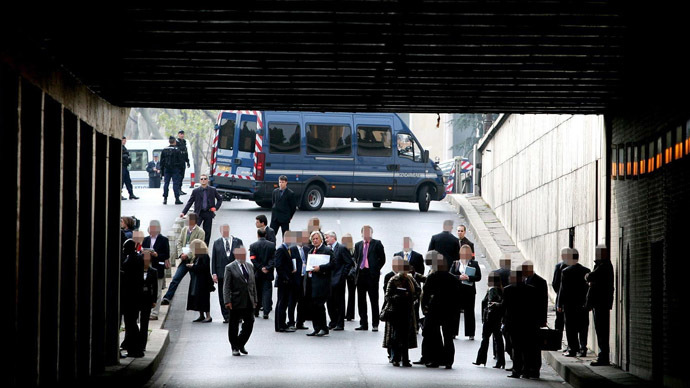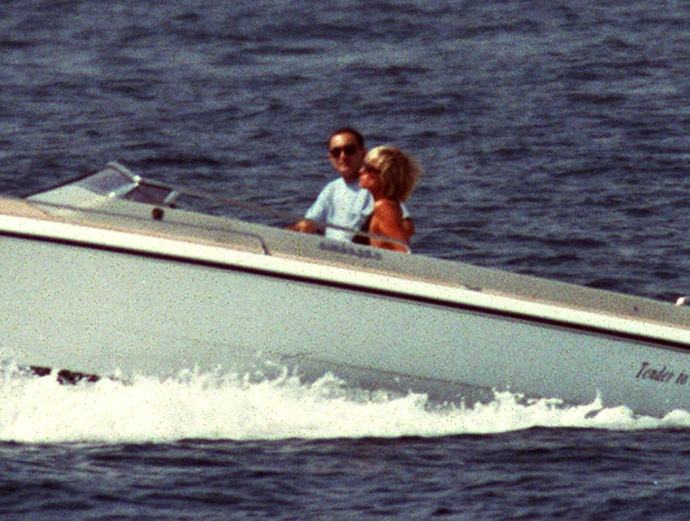Why former 'Black Ops.' SAS sleep with a gun under their pillow
Published time: August 22, 2013

Despite no paparazzi being at the scene of the crash that was allegedly caused by 4 to 6 high powered motorbikes which sped off, photographers are still blamed by much of the London media. The coroner's court verdict of 'Unlawful Killing' should have scotched forever the idea that the car crash was an 'accident' but such a 'coincidence theory' still circulates as fact.
Royal skullduggery was entirely normal in Medieval England. Even in the up-tight 1880s the trail to London's Jack the Ripper and his murders of prostitutes led back, through prominent freemasons, to the royal household. Stephen Knight's 1976 book 'Jack the Ripper, The Final Solution', showed young Edward VII had a taste for sexual adventure and three prostitutes had been attempting to blackmail the royal family.
This weekend came the extraordinary revelation that a former British special forces 'Soldier N' knew, 'it was the SAS who arranged Princess Diana's death and that has been covered up'. His parents spelt it out in a letter to a senior military officer, which appeared in evidence in the case of another former SAS soldier, Danny Nightingale.
While Nightingale had been caught in possession of an illegal firearm and ammunition, 'Soldier N' himself had quite a cache, a hand grenade, stun grenades, a Glock pistol and hundreds of rounds of ammunition at his home.
So are these former SAS men 'gun crazy' reprobates as the prosecution would have us believe? Or, having first or second hand knowledge of political assassinations, might they be justified in fearing for their lives?
The idea that the military might be used for secret 'black operations' abroad is nothing new. For example during 'regime change' operations to destabilize Libya in March 2011, eight British soldiers and secret service officers on 'black ops.' were arrested by Libyan rebels in the Benghazi hinterland.

Political leaders using the armed forces as their personal plaything and conspiring with rogue elements in the military, was reflected right across Europe in NATO's Operation Gladio. Described by one soldier as "the most secret operation ever", it allegedly involved the commissioning of terrorist acts, roughly from 1970-1990, against the European public by secret meetings of NATO Intelligence in Brussels.
"The role of the Central Intelligence Agency (CIA) in sponsoring Gladio and the extent of its activities during the Cold War era, and its relationship to right-wing terrorist attacks perpetrated in Italy during the "Years of Lead" (late 1960s to early 1980s) and other similar clandestine operations, is the subject of ongoing debate and investigation but has never been proven. Switzerland and Belgium have had parliamentary inquiries into the matter."
It is in this context then that we should examine these latest allegations about the death of Princess Diana. It is certainly not unprecedented that 'special forces' might be used to eliminate a political rival. Former Italian Prime Minister Aldo Moro was assassinated by his political rivals, who were thought to be connected both to Operation Gladio and Italy's secret cabala of the day, Licio Gelli's P2 Masonic lodge.
These events were not entirely ignored by the London media. The BBC's Timewatch programme collaborated with director, Allan Francovich, to document Gladio in three 1992 films. The Ring Masters, The Puppeteers and The Foot Soldiers contain jaw-dropping interviews with soldiers and jailed fascists, about attacks on police stations and the execution, by NATO, of hundreds of innocent passers-by. No wonder they wanted Gladio kept so secret.
Put yourself in the shoes of a soldier ordered to carry out a murder or assassination. At the time, these missions are probably painted as daring actions by senior officers. Only after time, as the truth emerges, do soldiers see they have been duped and dishonored. Many realize the only way to regain their dignity is to do the unthinkable and go public.

So, back to the present, and after two comprehensive police enquiries both in France and the UK, a coroners' inquest into the circumstances surrounding Diana's death recorded a verdict of 'Unlawful Killing'.
Journalist and comedian Keith Allen spent four years and £2.5m making a comprehensive documentary 'Unlawful Killing'. Completed in 2011 Allen's 'inquest into the inquest' exposes evidence that the killing was no 'accident' but appeared timed to smash to oblivion Diana's imminent engagement to Dodi Al-Fayed.
Even though he paid for it, Al-Fayed appears to have lost control of the film, and its worldwide distribution has been entirely blocked, as has any free online release. Only the Iranian English language, Channel Press TV, now banned in the UK and blocked by YouTube has aired any clips and reviewed the film. Demanding 87 cuts, royal lawyers have effectively censored it.
However, a retired Australian journalist, John Morgan, has carried out a comprehensive investigation in his 150 page 2012 book 'Paris London Connection, The Assassination of Princess Diana'. He describes the main motives behind her killing as Diana's support for the HALO anti-land mines campaign and the immense power she had to embarrass and upstage the royal family.

Morgan believes a Muslim step-father for William and Harry was seen in Zionist-leaning royal circles as unacceptable. He argues the decision to kill Diana was made at a hastily organized Balmoral meeting of the 'Way Ahead Group' on Wednesday 23rd July, 1997. This was the last of a series of meetings specifically to deal with the threat a divorced and freewheeling Diana posed to the royal family.
As the masterminds, Morgan places MI6 officers, Sherard Cowper-Coles and Richard Spearman, in Paris specifically for the period immediately running up to the 'accident', replacing MI6 Paris's station chief, Eugene Curley, who was recalled to London. Cowper-Coles subsequently received a knighthood and left MI6 over a multiple bribery scandal that hit private arms manufacturer, BAe Systems.

Miloševic didn't die in a tunnel but was charged in 2001 with 'Crimes Against Humanity' at the International Criminal Tribunal for the former Yugoslavia in The Hague. In March 2006 he died in suspicious circumstances, apparently poisoned through his prison food a few months before the verdict was due.
The
statements, views and opinions expressed in this column are solely those
of the author and do not necessarily represent those of RT.




No comments:
Post a Comment